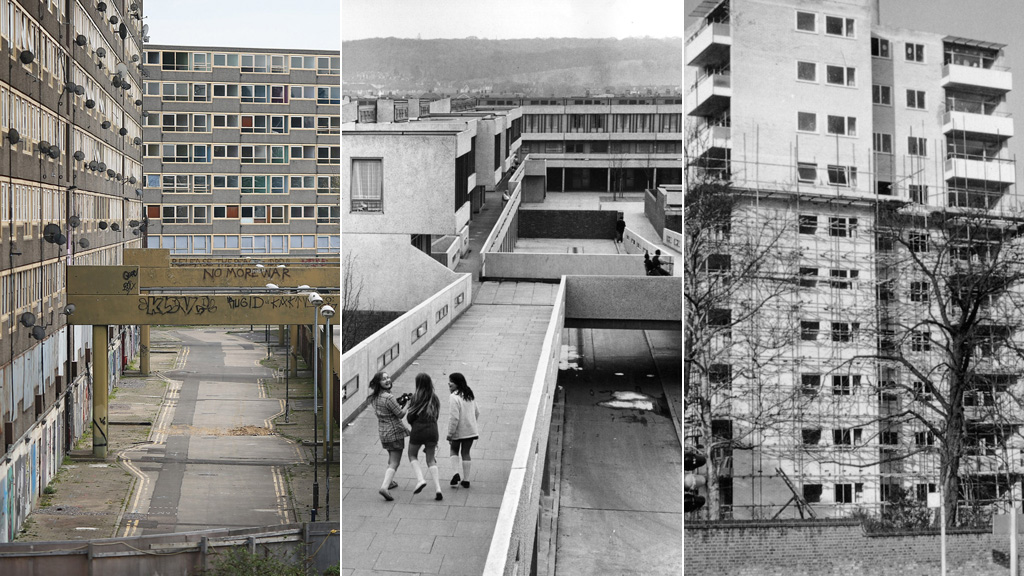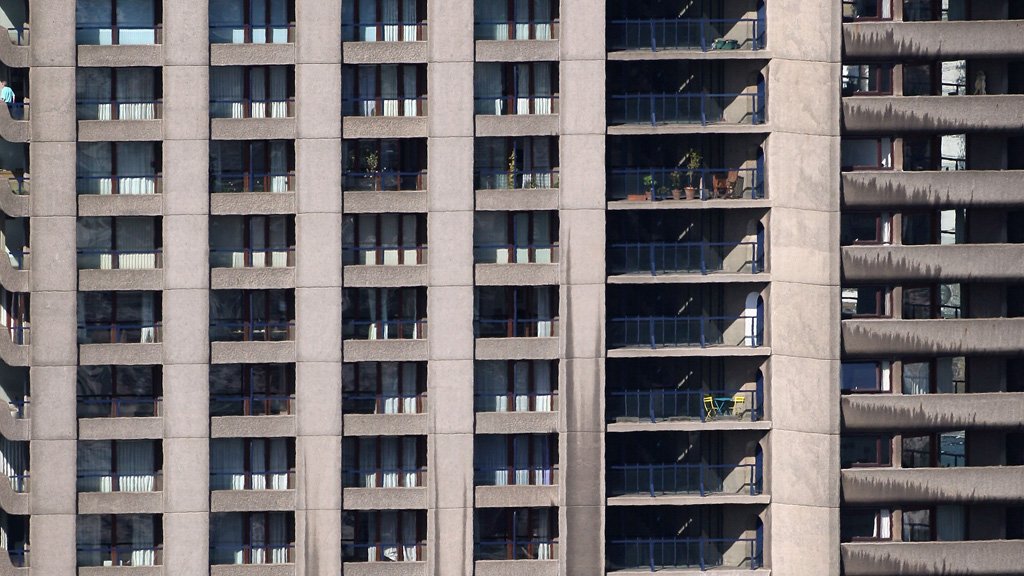Estate of mind: politics, design and social housing
As a notorious, now regenerated, council estate gets shortlisted for a coveted architectural award – Channel 4 News wonders if this is a sign of social housing en vogue, or a system that is broken.
Park Hill, loved and loathed in equal measure in its home city of Sheffield, has been refurbished by developer Urban Splash – and the scheme has been shortlisted for the Royal Institute of British Architects Stirling prize.
The estate, the setting for the Arctic Monkeys View From The Afternoon music video, is a prominent landmark in the city. It was given Grade II listing status in 1998, making it the larged listed building in Europe.
Whilst initially popular when it was developed in 1961, the estate – well known for its three-metre wide “streets in the sky” (designed to allow milk floats to drive around the estate) – suffered a dip in fortunes. Neglect and a lack of security contributed to the estate earning the nickname, from its own residents, of ‘San Quentin’ – after the notorius US jail.
The new development, in which around a quarter of homes are “affordable”, includes a new high street, a village green, and sees the development clad in coloured glass and trendy touches – such as the immortalisation in neon of a famous piece of graffiti on the side of the building “I love you will u marry me” (original graffiti pictured below).

The fortunes of Park Hill, it could be argued, represent the wider changes that social housing in the UK has undergone.
Dystopia or utopia?
Council estates have long been the cultural backdrop, in films such as Harry Brown, A Clockwork Orange, and Fahrenheit 451 (settings pictured below, left to right, Heygate, Thamesmead, Alton) to present a vision of a dystopian society.
However, it was on utopian ideals that they were founded, argues Dr Paul Jones, of the University of Liverpool, who also authored The Sociology of Architecture.

“These buildings were originally designed in a context where governments were investing huge amounts of money in providing housing. Architects were developing a new, more equitable, more sustainable society – a fairer place to live for all people.
“It was efficient, cheap, and was going to a better life for the residents.”
When these places were developed they were looking for a ‘brave new world’ and in ‘brave new worlds’ experiments take place. Angela Brady, president of RIBA
However, Dr Jones argues, the architectural dream did not go as planned. “The ideal was to create classless societies,” he told Channel 4 News.
“What played out was that places like Park Hill became bound up with certain sorts of social issues. That utopian vision, the promise of these new equal places, fell away.”
This style has had a resurgence in popularity, something that Mark Swenarton, the James Stirling Professor of Architecture at the University of Liverpool argues is because of it’s “solid” appearance.
He said: “To a new generation they love it because it was massive, and solid and plastic. What you see is what it’s built of. Architecture today is just a clip on to a frame.”
Brave new world
Angela Brady, president of RIBA and one of the founder of masterplanning specialists Brady Mallalieu Architects, argues that the the estates had architectural value – “I used to visit (Park Hill) and it was a real joy, even in its dilapidated state”, she says – but the vision was flawed.
“When these places were developed they were looking for a ‘brave new world’, and in ‘brave new worlds’, experiments take place,” she said.
“If you put one social group together in one place that is when you get a ghetto created.”
We are witnessing a period in which the state is actively withdrawing from the provision of welfare, including housing. Dr Paul Jones, Liverpool University
Today, Park Hill would not be described as a ghetto. The mix, no doubt at least partly out of a need for the scheme to be profitable, is considerably more focused towards private housing – and around 25 per cent is affordable.
‘Under attack’
This is a trend that has emerged in affordable housing – that is provided more by the private sector. In the 2010-2011 year more than 250,000 “permanent dwellings” were started by housing asscociations, according to government statistics. For the 2012-2013 year that figure had slipped to 18,190.

A reason for this, according to Dr Jones, is the government deliberately reducing how much it provides to the welfare state,
Dr Jones says: “People who live in council housing are under various types of attack, in terms of their benefits, the bedroom tax. There is a context of the government not wanting to provide as much in terms of benefits. I think that is bound up with the privatisation of housing supply.
“We are witnessing a period in which the state is actively withdrawing from the provision of welfare, including housing. The questions about what the architects can do lead back to their clients, which is often the government.”
He said he welcomes that architectural praise is returning to “brutalist” schemes such as Park Hill, and said he hopes that it might be an indicator that the principles the project was founding on – to create a better place for people to live – are returning to the forefront of architecture.
‘Ghetto-isation’
Whilst Ms Brady welcomes the increased mix that is happening in private sector developments, she also draws attention to government policies – saying it is leading to a “ghetto-isation”.
“It (government welfare policy) is having a devastating effect,” she said. “The government is making decisions based on who they think should have a flat in Kensington or in central London – rich people. This is what happened in Paris (where there are large, more deprived suburbs on the outskirts of the city).
“It is the equivalent of ethnic cleansing.”
She said the problem is that registered social landlords (RSLs) are struggling to raise money and that the government is not helping. The only ways they can raise money, she argues, is selling off their land or increasing rents.
RIBA suggests that local authority pensions are used to boost the housing construction industry through a local housing development fund.
‘A key part’
A government spokesperson said: “The need for welfare reforms has never been more clear at a time when the housing benefit bill has spiralled to over £21bn a year and there are 250,000 people living in overcrowded accommodation.
“Our reforms will help bring the welfare bill down and get the system working better for people who rely on it.
“Social housing plays a key part in this and that’s why our £19.5 billion affordable homes programme is set to exceed expectations and deliver up to 170,000 new affordable homes to rent or own by 2015.
“The recent spending review included plans to deliver 165,000 more affordable homes over the following three years, a faster annual rate of building than in any year for at least the last two decades.”